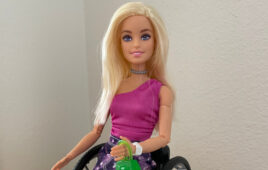

Shape back has it covered.


Shape back has it covered.
“Our priorities when designing this wheelchair back support in summary were functionality, aesthetics, light weight and durability. All of these priorities matter for all users, some obviously more than others. We also knew that small hardware works well for pediatric patients and wanted to meet the needs of pediatric users as well. Getting input from multiple user types during field trials really helped us focus in on the right priorities.”
Jackie Casey, MSc., BSc. Hons OT, FHEA, is Ottobock’s clinical specialist of mobility solutions.
“When the backrest was being designed, we wanted to target those clients/consumers from a broad range of needs and abilities,” she said. “We wanted to target both active, independent wheelchair users and users dependent on others for their mobility. We expected these users would have trunk asymmetries or postural trunk collapse that could not be as well managed or accommodated using off-the-shelf seating products.”
It turns out many of the OBSS Ortho-Shape back’s highlights do effectively serve disparate groups of users.
“The combination of being light weight, adjustable and able to provide postural support means that this system is indeed extremely versatile,” Casey said. “The benefits of this versatility for our clients includes an ability to uniquely tailor the back to the individual’s body contours. It simultaneously enables them to have fewer compromises through optimizing their ability to carry out their everyday activities as a result of having a lightweight system.
“Additionally, we have the ability to make small further modifications to the shape in the field, which combined with extremely adjustable hardware, assists us to meet the user’s exact needs. This adjustability through both the hardware and the contour modification option will allow the user to keep the product for many years, even if subtle changes are required, which will ultimately improve client outcomes and decrease costs long term.”


